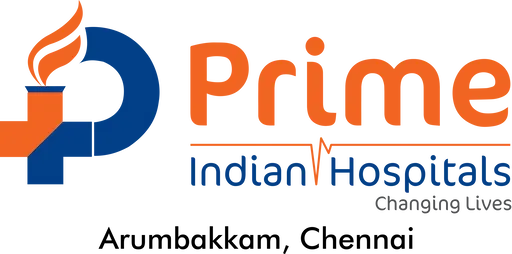Hearing the words you have breast cancer can feel overwhelming — it’s normal to feel scared, confused, or full of questions. But here’s the reassuring truth: modern breast cancer treatment has come a long way. Today, patients have access to advanced technology, personalized care, and strong chances of full recovery.
With early detection, emotional support, and the right medical plan, many people live long, healthy, and empowered lives after treatment. In this post, we’ll break down what breast cancer is, its stages, symptoms, causes, and breast cancer treatment options in a simple, calm way that helps you feel informed and hopeful.
What is Breast Cancer?
Breast cancer happens when cells in the breast start growing uncontrollably, forming a lump or mass that can spread to nearby tissues. It’s one of the most common cancers affecting women, though men can get it too. The good news? With early detection and the right breast cancer treatment, recovery rates are higher than ever. Doctors now use advanced imaging, targeted therapy, and minimally invasive surgery to improve both comfort and outcomes. The main goal of breast cancer treatment isn’t just removing cancer it’s also about protecting your overall well-being: physical, emotional, and mental.
Types of Breast Cancer
Breast cancer can start in different parts of the breast, and knowing the type helps your doctor choose the most effective breast cancer treatment.
Here are the most common types:
- Ductal Carcinoma In Situ (DCIS) – An early, non-invasive cancer that starts in the milk ducts and hasn’t spread. It’s often curable with surgery and radiation.
- Invasive Ductal Carcinoma (IDC) – The most common form. It begins in the milk ducts and can move into nearby tissues. IDC responds well to early breast cancer treatment.
- Invasive Lobular Carcinoma (ILC) – Begins in the milk-producing lobules and can spread locally. It’s treatable with surgery, hormone therapy, or targeted care.
- Triple-Negative Breast Cancer (TNBC) – A more aggressive type that doesn’t respond to hormone therapy, often managed with chemo or immunotherapy as part of breast cancer treatment.
- HER2-Positive Breast Cancer – Produces too much HER2 protein, which speeds up cell growth. Targeted therapy has made breast cancer treatment for this type highly effective.
- Inflammatory Breast Cancer – A rare, fast-moving form causing redness and swelling. It requires urgent care with chemo and radiation.
- Metastatic (Stage 4) Breast Cancer – When cancer spreads to other organs like the lungs or bones. Ongoing breast cancer treatment by stage focuses on controlling symptoms and maintaining quality of life.
What are Breast Cancer Symptoms?
Catching symptoms early can make all the difference. Common warning signs include:
- A lump or thickened area in the breast or underarm
- Swelling, redness, or irritation of the breast
- Changes in breast shape, size, or texture
- Nipple inversion or unusual discharge
- Persistent breast or nipple pain
Not every lump means cancer but it’s always better to check. Regular screening helps with early detection and faster breast cancer treatment if needed.
What Causes Breast Cancer?
There isn’t one single cause, but certain factors can increase the risk of developing breast cancer.
Common causes include:
- Family history of breast or ovarian cancer
- Genetic mutations like BRCA1 or BRCA2
- Hormonal changes or long-term hormone therapy
- Aging, radiation exposure, or obesity
- Lifestyle habits such as alcohol use or poor diet
Having risk factors doesn’t mean you’ll get cancer but staying proactive with checkups ensures breast cancer treatment can start early for the best results.
Stages of Breast Cancer
Understanding the stage helps doctors create the best care plan. Staging shows how far the cancer has progressed.
- Stage 0–1: The earliest stage, often limited to the breast ducts. Stage 1 breast cancer treatment usually includes surgery or local radiation and has excellent recovery outcomes.
- Stage 2–3: Cancer may reach nearby lymph nodes but is still treatable through a mix of surgery, radiation, and chemotherapy.
- Stage 4: The cancer has spread to other parts of the body. Here, doctors use multiple approaches to manage symptoms and improve quality of life.
Every patient’s journey is unique. That’s why breast cancer treatment by stage is tailored — from stage 1 breast cancer treatment to advanced therapies to ensure the best possible outcome.
Breast Cancer Treatment Options
The best breast cancer treatment plan depends on your cancer’s type, stage, and overall health. Doctors create personalized strategies designed around your needs and lifestyle.
Here are the main treatments:
- Surgery: Removes the tumor or affected tissue. Options include lumpectomy (removing the lump) or mastectomy (removing the breast).
- Radiation Therapy: Targets leftover cancer cells after surgery to reduce recurrence.
- Chemotherapy: Kills cancer cells throughout the body — used before or after surgery.
- Hormone Therapy: Blocks hormones like estrogen or progesterone that can fuel cancer growth.
- Targeted Therapy & Immunotherapy: Modern approaches that attack cancer cells precisely while protecting healthy tissues.
Your medical team will guide you through every step, adjusting breast cancer treatment by stage to ensure safety, comfort, and success.
About Cost
The breast cancer treatment cost can vary depending on the hospital, stage, and chosen therapies. Factors like surgery type, medication, and recovery time also play a role. To make treatment more accessible, many hospitals and insurance programs offer financial assistance. Talking with your care team early about the breast cancer treatment cost can help you plan confidently and focus fully on healing.
Results & Recovery
Thanks to early screening and modern care, most patients recover well after breast cancer treatment. Survival rates continue to rise, and life after cancer is full of strength, gratitude, and purpose. Recovery isn’t just physical — it’s also about emotional healing, healthy habits, and staying connected to your support system.Remember: you’re not in this alone. With professional guidance, self-care, and family support, your journey through breast cancer treatment can lead to a healthier, brighter, and more confident you.
Read also: Best oncologist in Chennai





